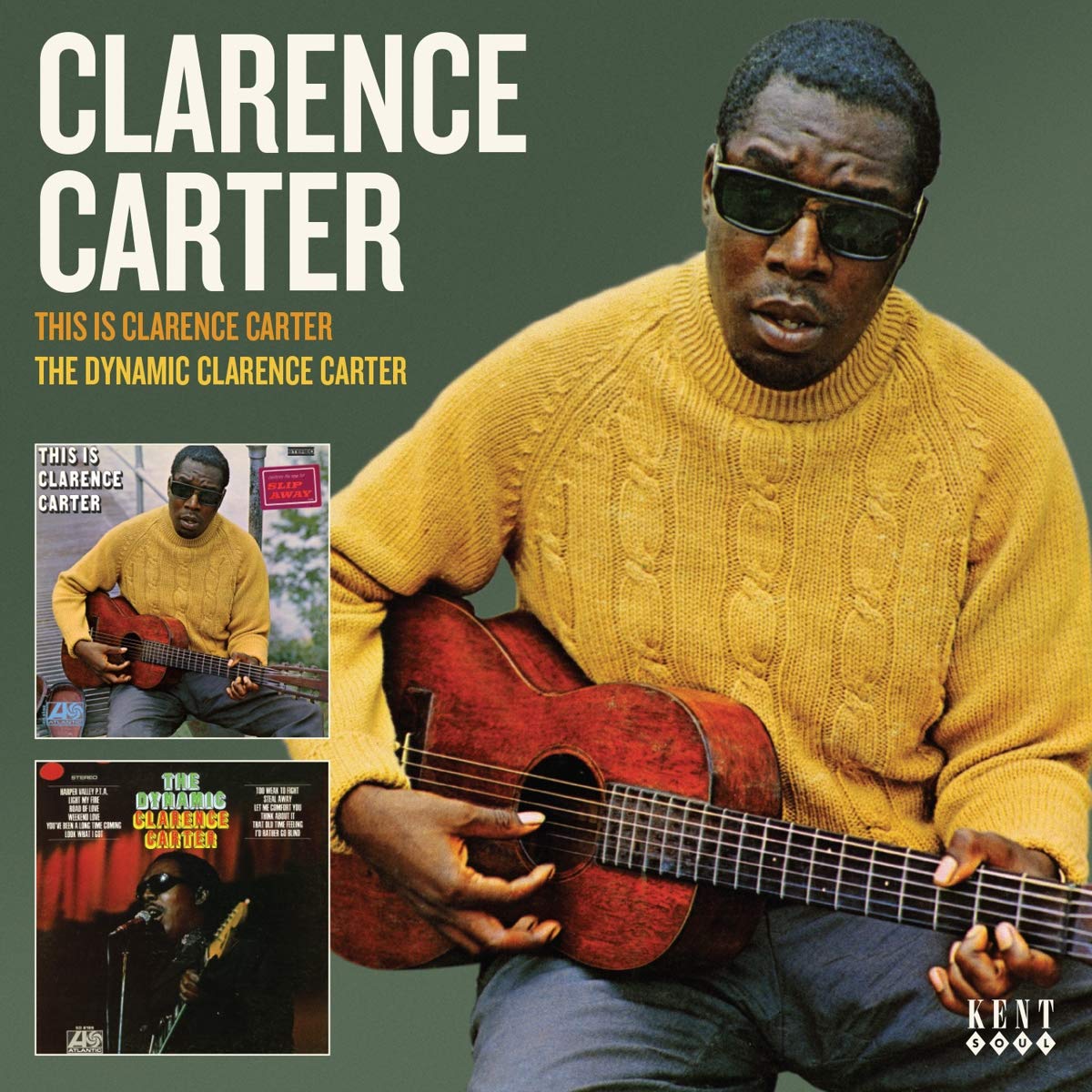Let it play in the background as you study and immerse yourself in this topic!
Composer, lyricist, blues singer Clarence George Carter was born blind on January 14, 1936, in Montgomery, Alabama. He attended the Alabama School for the Blind in Talladega, Alabama, and began guitar lessons when he was 9. Carter graduated from high school in 1954. Afterward, he enrolled in Alabama State College in Montgomery, majoring in music. He received a Bachelor of Science degree in 1960.
After college, Carter and his schoolmate Calvin Scott, also blind, formed the duo “Clarence & Calvin” and by 1962 just called themselves C & C Boys. They signed with Duke Records and principally performer covers throughout the clubs in Birmingham. They did record several singles but none of them charted. After Scott was in a severe automobile accident in 1966, Carter continued as a soloist.
Signing on the Fame label in 1967, Carter released “Tell Daddy,” which peaked at no. 35 on the Billboard R&B chart. After the regional success of the recording, in 1967, Carter moved on to the prestigious Atlantic Records label where he recorded a string of hits on the R&B and pop charts, starting with “Slip Away” from the successful album This Is Clarence Carter that reached no. 2 R&B and no. 6 on the Billboard Hot 100 chart and sold more than a million copies. From the same collection, “Looking for A Fox” reached no. 20 R&B and no. 62 Billboard Hot 100 and “Funky Fever” peaked at no. 49 R&B and no. 88 Billboard Hot 100 in 1968. The single “Too Weak to Fight” peaked no. 3 R&B and no. 13 on the Billboard Hot 100 chart and was certified gold, selling more than 500,000 copies. Carter released several albums in 1969 including Testifyin’ that reached no. 138 on Billboard 200 Album chart and The Dynamic Clarence Carter, which peaked at no. 169 on that chart. That year (1969), he was also nominated at the 12th Annual Grammy Awards for “Best Rhythm & Blues Song” for the single “I’d Rather Be An Old Man’s Sweetheart.”
In 1970, Carter and Canzetta Maria “Candi” Staton, a singer from Hanceville, Alabama, were married. They were the parents of a son, Clarence Carter Jr. That same year, Carter released his rendition of the R&B ballad “Patches” from the album sharing the same title, which was no. 2 UK and no. 4 US. It sold more than a million copies and won the “Best R&B Song” at the 13th Annual Grammy Awards in 1971. It was followed by his work The Best Of Clarence Carter that reached no.103 on the Billboard album chart in 1971. A decade later, in 1981, Carter released Let’s Burn to peak at no. 189 on the Billboard album chart and remain charted for 3 weeks.
In 2003, Clarence George Carter was inducted into the Alabama Music Hall of Fame.
Do you find this information helpful? A small donation would help us keep this available to all. Forego a bottle of soda and donate its cost to us for the information you just learned, and feel good about helping to make it available to everyone.
BlackPast.org is a 501(c)(3) non-profit and our EIN is 26-1625373. Your donation is fully tax-deductible.
Billboard, “Clarence Carter: Chart History,” https://www.billboard.com/artist/clarence-carter/; “Clarence Carter January 14, 1936, 2003 Inductee,” https://www.alamhof.org/clarencecarter; Fame Backstage, “Artist of the Month: Clarence Carter,” https://famestudios.com/clarence-carter/.

